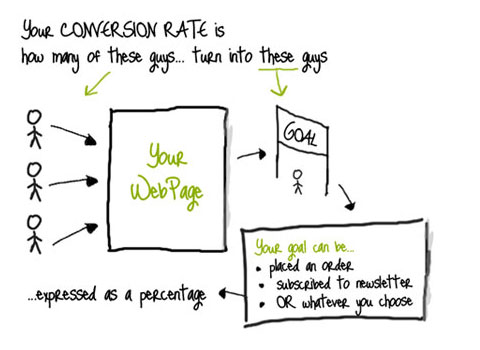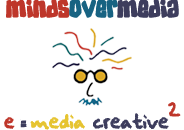Conversion Rate Optimization Denver
Conversion Rate Optimization (CRO) has become a major measuring stick of a successful Internet Marketing program. The importance has shifted from obtaining traffic to converting that traffic into customers or buyers. Unlike Pay Per click (PPC) marketing, CRO isn’t a strategy of the more you spend the more leads you get. CRO requires as much creativity, as it requires monetary investment.
Conversion optimization can improve the efficiency of all of your online marketing programs and significantly impact your bottom line.
What Is Conversion Rate Optimization?
Online marketing can be divided into three primary activities:
- Acquisition – getting traffic to your website
- Conversion – getting website visitors to do what you want
- Retention – deepening the relationship and increasing its lifetime value

Because of the large amounts of money spent on acquisition and retention, sophisticated systems have been created to maximize the ROI of these activities. But the efficiency of the website or landing page has been largely neglected. Many companies now understand that website and landing page conversion rates can have a dramatic impact on online marketing program profits. That’s where the new battleground is in the coming years.
What is “conversion rate”?
The conversion rate is the percentage of unique visitors who take a desired action on your website. A desired action can be clicking through to another page, filling out a form, signing up for a free trial, downloading content, or purchasing a product or service. Some companies may have multiple desired actions on their websites (e.g. request information, sign up for a newsletter, download a demo, free trial, or purchase).
What is “conversion optimization”?
Conversion optimization is the process of improving conversion rates by testing website changes. This can be done in a single engagement or as an ongoing series of tests.
Many companies will spend hundreds of thousands or millions of dollars annually to pay for traffic to their website. They then land the traffic on a landing page which has had very little thought or resources put into it.
The website or landing page is typically designed with input or influence from some or all the following groups: outside advertising agency, webmaster, product manager, marketing, usability consultants, graphic designers, I.T., upper management.
The key missing ingredient, but the most important one, is input from the intended target audience. If there is any target audience input it is typically from qualitative sources with small numbers of participants (e.g. focus groups, or eye-tracking studies).
What is the objective of your website?
Your website most likely currently serves too many masters. Worse yet, it probably ignores the most important audience of all – your website visitors.
The purpose of your website is to align the behavior of visitors with your measurable business objectives.
Your website or landing page should be designed to maximize the value of all trackable conversion actions.
For e-commerce the value of a conversion is the revenue or gross profit amount of the transaction. For other conversion actions such as lead forms, downloads, or email sign-ups you can back into the corresponding value by starting with the ultimate end-point value of the process. For example, if your conversion action is an information request and 10% of these eventually lead to a sale with an average value of $1,000, then you can assign a value of $100 to each information request.
Why is Conversion Optimization Important?
Why should you care about conversion optimization? In most cases you must pay market rates to get significant volumes of quality traffic to your site. This is true of both pay-per-click “PPC” traffic (based on an open auction model) and cost-per-acquisition “CPA” traffic (most of which goes to the destinations with the highest earnings per click). If you want more traffic, you basically have to pay more. Cost-per-click (“CPC”) prices and CPA bounties for established industries are usually trending upwards.
How can your company compete?
The economics of your online marketing program depend on your cost-per-acquisition (CPA) for a new client or prospect. This CPA depends on two factors: your cost-per-click (CPC) for getting traffic to your site, and the conversion rate (CR).
Conversion economics:
Optimize your website for conversions to lower costs.
CPA = CPC / CR
By increasing your conversion rate, you lower your cost per acquisition without changing what you pay for the traffic.
Another way of looking at conversion improvement is the impact on profitability. Even a small increase in conversion rate can have a dramatic profit impact.
Let’s consider a simple example: Your program has a 25% return on investment (ROI) – for every $1.00 spent on buying traffic, $0.25 in profit is created.
BEFORE:
Value – $1.25
Cost – $1.00
Profit – $0.25
Let’s assume that you can increase your conversion rate by a modest 20%. What would be the impact on your profits?
AFTER:
Value – $1.50 ($1.25 x 120%)
Cost – $1.00 (Unchanged – same marketing activities)
Profit – $0.50 The 20% increase in conversion rate will DOUBLE your profits!
If you fix the conversion rate of your website, everyone in your company benefits.
Contact Us:
Minds Over Media LLC
303-521-6681 (tel)
866-667-8646 (fax)
Email Us


Follow Us!